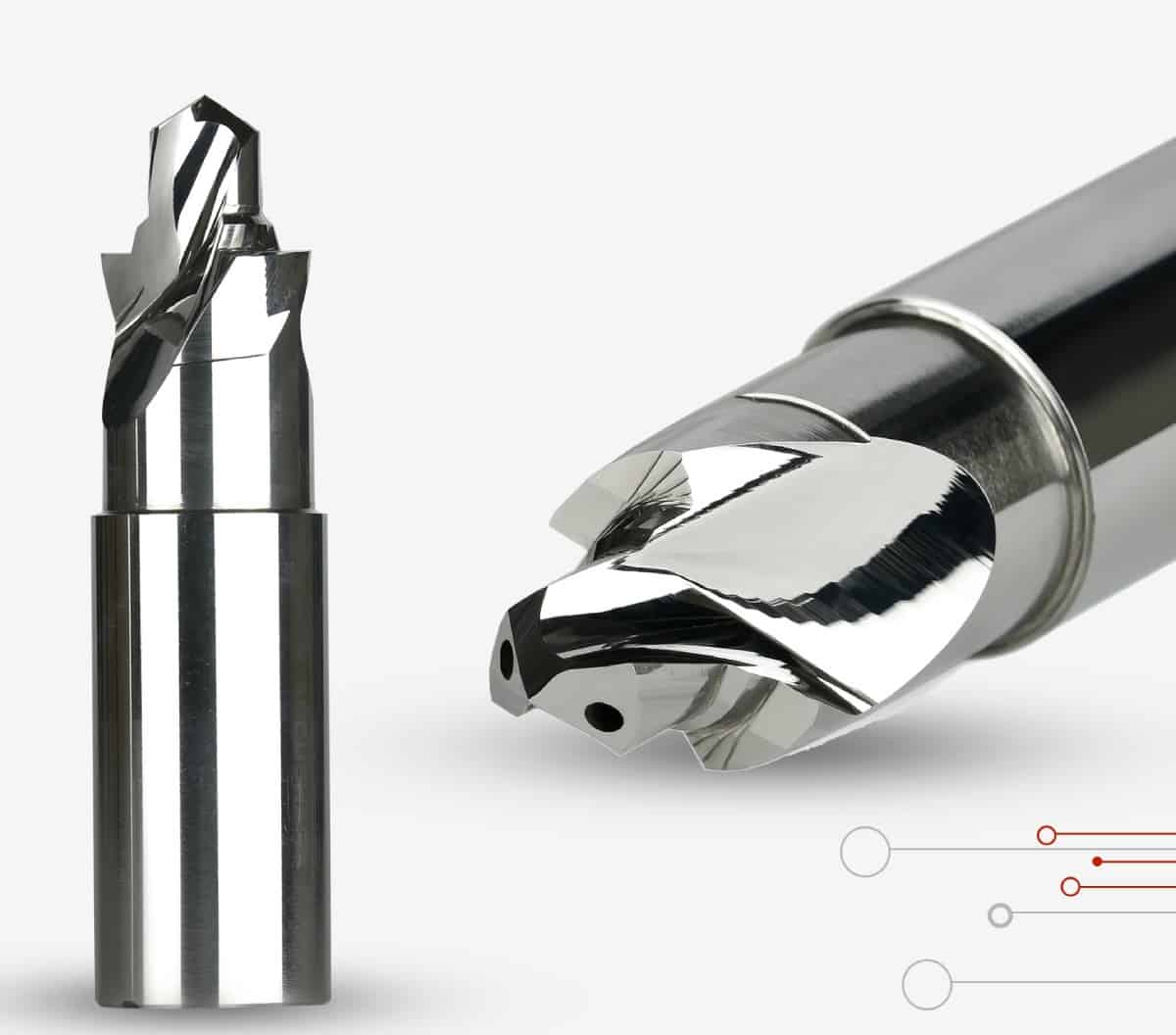Shops may employ reaming as a machining procedure to complete bores. Reaming has advantages over other procedures, like a single-point boring, in terms of speed, tool life, and surface finish quality.
Decoding the Art of Reaming
Reaming is the process of completing a bore by using a cutter to remove a little quantity of material. It combines cold working and cutting materials. Reamers are made to manage size and polish the surface but not to provide true position. Because a reamer usually follows the pre-reamed bore, its condition and location are crucial.
The uneven flute spacing results in its high performance, setting them apart from regular reaming tools. In comparison to typical reamers with equal flute spacing, this is touted to produce precisely round holes and a greater surface quality. These multi-edge reamers, according to the manufacturer, may also be operated at higher rates and feeds while still producing excellent holes with tight dimensional tolerance and high-quality surface finishes.
Its reamers can be tipped with polycrystalline diamond, cermet, or carbide (PCD). Modern thin-film PVD coatings can enhance performance, particularly in materials like stainless steel, grey cast iron, and a variety of high-temperature superalloys.
These reaming tools, according to the manufacturer, have three main advantages:
- Greater feed and speed rates.
When opposed to single-point boring, high-performance reamers’ many cutting edges enable faster feed rates and shorter cycle times. When compared to a single insert in a single-point boring tool, high-performance reamers have four to 16 teeth; the increase in feed rate can be four to 16 times faster.
Since a bore needs to be the right size and finish, single-point boring is employed, however because there is only one cutting edge working, it is naturally slower.
- Quick setup.
Setting the reamer is an easy process with high-performance reaming because the initial bore is a nice bore. The tool has been ground to the proper diameter, so there is no need to change it. Reaming is also a secure and reliable technique that doesn’t need as much altering as single-point boring.
- Slashing waste.
When working with very expensive materials, minimising scrap is especially crucial. For instance, manufacturers frequently make fewer parts made of expensive materials like titanium, Inconel, and other such materials in the aircraft industry. Using a high-performance reamer can help these manufacturers maintain consistent hole sizes over the course of the tool’s life and dramatically reduce scrap rates.
Understanding the Solid and Expandable Reamers
There are two main types of high-performance reamers: expandable and solid (nonexpandable). An expandable reamer allows the operator the option to expand the reamer within the tolerance area of the bore to prolong tool life because reamers do wear out with use. Targeted at the average bore diameter is an expanding reamer.
Up until the point where the surface finish is no longer acceptable due to wear, the expansion can be repeated.
The reamer can now be retipped to its original position.
In comparison to traditional reamers with equal flute spacing, unequal flute spacing is stated to produce precisely round holes and a greater surface quality.
A solid reamer’s diameter should be within tolerance by two thirds.
Given that this kind of reamer cannot be enlarged, this is done to allow for greater wear.
The reamer can also be retipped once it has reached the end of its useful life in terms of size or surface polish.
Expandable and solid reamers can be aimed practically anywhere within the diameter tolerance field to suit particular application requirements or client requests. Tolerance for hole diameter and desired surface finish are two factors to take into account when choosing between expandable and nonexpandable reamers. Expandable reamers are better suited for tight-tolerance bores with relatively harsh surface finish callouts because they can be expanded to extend tool life. Because the surface finish typically deviates from specification before the diameter, a bore with a higher surface finish callout is better suited for a nonexpandable reamer.
Reason for reaming
- To correctly finish drilled holes with suitable surface quality and size, reaming is used.
- It has the benefit of allowing for the consistent production of more holes of high quality.
- Reaming is necessary, with the precise diameter needed.
- It needs to have an appropriate edge profile.
- Where a well-sharpened surface is required, it is necessary.
- A precise pre-machined hole is required for reaming.
Benefits of Reaming
- Production rates range from 10 to 500 items per hour.
- Inexpensive in terms of equipment and tools.
- Low-cost finishing also required cleaning and deburring.
- The surface finish is improved by reducing the feed rate.
- Reaming is done under ideal circumstances at one-third of the drilling speed and two-thirds of the drilling feed rate.
- Center-drilled, drilled, bored, and reamed to finished size holes are the most exact.
- Surface roughness measurements range from 0.4 to 6.3 m Ra.
Reaming and boring are comparable types of processes, albeit they differ in certain ways. Yet, both processes serve the same function and involve a similar kind of effort. Therefore they are both beneficial to manufacturing businesses.
Looking for the highest-quality reamers, shop from Accusharp!


